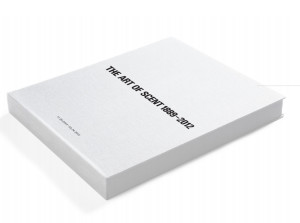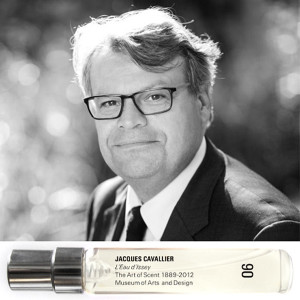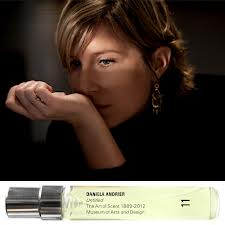I was listening to “Big Yellow Taxi” by Joni Mitchell the other day and a lyric stuck in my head: “Don’t it always seem to go/That you don’t know what you’ve got/Till it’s gone”. The reason it stuck in my head was I had received my catalog, The Art of Scent 1889-2012, to go with the exhibit of olfactory art at the Museum of Arts and Design (MAD) in New York City of the same name. This is a catalog which contains a coffret of 11 X 5mL atomizers of olfactory art from the exhibit, only Chanel No.5 is missing. That alone makes it worth having. What I think really makes it worth having is the soft cover book that accompanies the perfume, written by Chandler Burr, this is what got the lyric bouncing around in my head.
As I discovered the thriving perfume community on the internet about ten years ago there were two writers’ names that, came up over and over, one needed to read. One was Luca Turin and the other was Chandler Burr. Both of them wrote unapologetically about perfume as works of art and through their writing caused me to consider fragrance as an art form. Sadly over the last few years both of their written voices have been nearly silent and that is what got me thinking of not knowing what you’ve lost until it is gone. This is why the book of essays was as wonderful for me as I once again had a voice back I hadn’t realized I missed, presenting a thoughtful idea on the nature of olfactory art from his perspective.
The book of essays contains one for each of the atomizers in the coffret and the essays explain the school of olfactory art that Mr. Burr believes each belongs to. Each entry takes you through the underpinnings of each school. Mr. Burr uses differing techniques to make his point. In the Jicky entry it is all about the use of synthetics for the first time as befits the putative alpha fragrance of olfactory art. I found the entry on Minimalism to be my favorite for a couple of reasons. First Mr. Burr challenged my notion of what Minimalism is and made me think about it. Second this is the kind of prose I miss most of all from Mr. Burr; a concise concept which is communicated clearly without an excess of verbiage. Here is Mr. Burr on L’Eau d’Issey , by perfumer Jacques Cavallier, from the catalog:
“Cavallier built a work with no evolution on the skin. L’Eau d’Issey opens as if on a single note and continues to hold that note until it simply fades, with no variation in tone, into silence. By transforming a powerful floral structure into a deceptively simple structure that persists on the skin, Cavallier’s L’Eau d’Issey is a technological, as well as stylistic, triumph.”
Mr. Burr’s way of turning a phrase is also evident throughout as in this description of Untitled by Daniela Andrier:
“With Untitled we feel the violence of a cold storm that has ripped limbs from young trees, revealing the green organic material inside, the smell of fresh cold rain water, the green of a chilled spring, heightened and slightly brutal.”
In some of the articles I have seen on The Art of Scent 1889-2012 exhibit itself, on the perfume blogs and forums, it has been mentioned that it is a bit basic. I believe that is what is necessary to have the general public begin to see fragrance as olfactory art. If you don’t use things familiar to them then they are lost. The catalog is the opposite of that, this is the piece of the exhibit for the advanced aficionado of olfactory art. The opportunity to read Mr. Burr’s theses on the different schools of olfactory art plus the ability to spritz some on and consider whether his words match what you experience, this is where those of you who wanted more depth should come. This is also where those of you who can’t make it to NYC by the February closing should also come as the catalog is cheaper than a plane ticket and will hang around for more than a few months.
I wanted to own this catalog because I believe this is the opening statement of a conversation on what we believe olfactory art to be. Through the effort it took to make the exhibit, and this catalog, a reality it gives Mr. Burr the honor of the opening statement. It is the place to start shaping a vocabulary and common ground so that there is a way to compare and contrast the past as well as future examples of olfactory art.
The catalog will be in the permanent stack of reference works on the right side of my desk as I believe it is a critical text to have for me to use as I continue to write about olfactory art and fragrance.
The catalog is available exclusively, in a numbered edition of 1000, through the Museum of Art and Design store and can be found at this link.
The exhibit runs through February 24, 2013 at the Museum of Arts and Design in New York City. Information on the exhibit and ancillary talks can be found at this link.
Disclosure: This review was based on a catalog I purchased.
–Mark Behnke, Managing Editor





